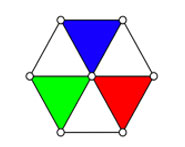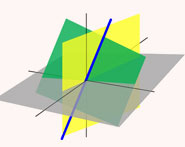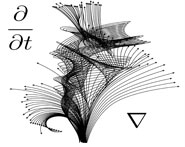


 تاريخ الرياضيات
تاريخ الرياضيات
 الرياضيات في الحضارات المختلفة
الرياضيات في الحضارات المختلفة 
 الرياضيات المتقطعة
الرياضيات المتقطعة
 الجبر
الجبر
 الهندسة
الهندسة 
 المعادلات التفاضلية و التكاملية
المعادلات التفاضلية و التكاملية 
 التحليل
التحليل
 علماء الرياضيات
علماء الرياضيات |
Read More
Date: 1-4-2021
Date: 6-3-2021
Date: 19-2-2021
|
The Lorenz curve is used in economics and ecology to describe inequality in wealth or size. The Lorenz curve is a function of the cumulative proportion of ordered individuals mapped onto the corresponding cumulative proportion of their size. Given a sample of  ordered individuals with
ordered individuals with  the size of individual
the size of individual  and
and  , then the sample Lorenz curve is the polygon joining the points
, then the sample Lorenz curve is the polygon joining the points  , where
, where  , 1, 2, ...
, 1, 2, ... ,
,  , and
, and  . Alternatively, the Lorenz curve can be expressed as
. Alternatively, the Lorenz curve can be expressed as
 |
where  is the cumulative distribution function of ordered individuals and
is the cumulative distribution function of ordered individuals and  is the average size.
is the average size.
If all individuals are the same size, the Lorenz curve is a straight diagonal line, called the line of equality. If there is any inequality in size, then the Lorenz curve falls below the line of equality. The total amount of inequality can be summarized by the Gini coefficient (also called the Gini ratio), which is the ratio between the area enclosed by the line of equality and the Lorenz curve, and the total triangular area under the line of equality. The degree of asymmetry around the axis of symmetry is measured by the so-called Lorenz asymmetry coefficient.
REFERENCES:
Dagum, C. "The Generation and Distribution of Income, the Lorenz Curve and the Gini Ratio." Écon. Appl. 33, 327-367, 1980.
Kotz, S.; Johnson, N. L.; and Read, C. B. Encyclopedia of Statistical Science. New York: Wiley, 1983.
Lorenz, M. O. "Methods for Measuring the Concentration of Wealth." Amer. Stat. Assoc. 9, 209-219, 1905.
Weiner, J. and Solbrig, O. T. "The Meaning and Measurement of Size Hierarchies in Plant Populations." Oecologia 61, 334-336, 1984.



|
|
|
|
للعاملين في الليل.. حيلة صحية تجنبكم خطر هذا النوع من العمل
|
|
|
|
|
|
|
"ناسا" تحتفي برائد الفضاء السوفياتي يوري غاغارين
|
|
|
|
|
|
|
نحو شراكة وطنية متكاملة.. الأمين العام للعتبة الحسينية يبحث مع وكيل وزارة الخارجية آفاق التعاون المؤسسي
|
|
|